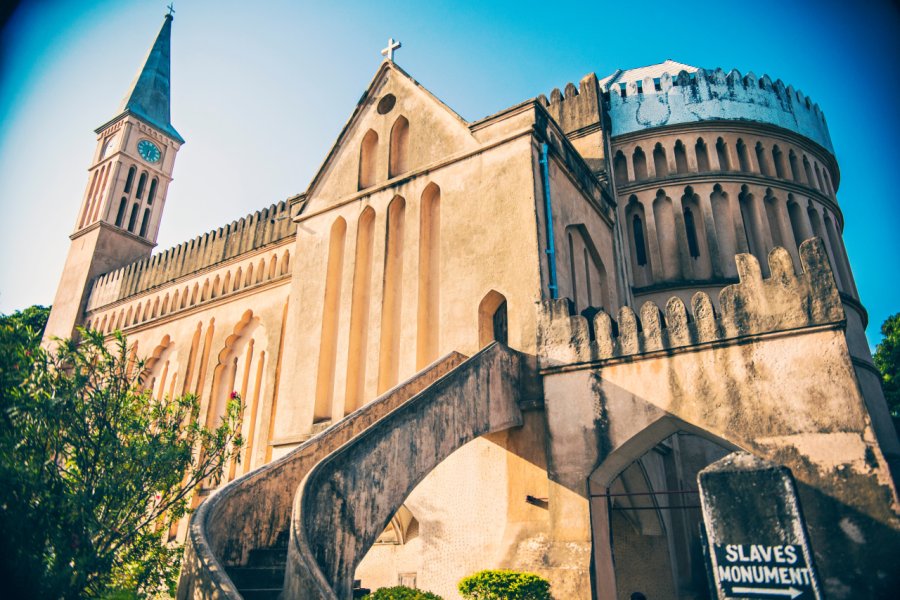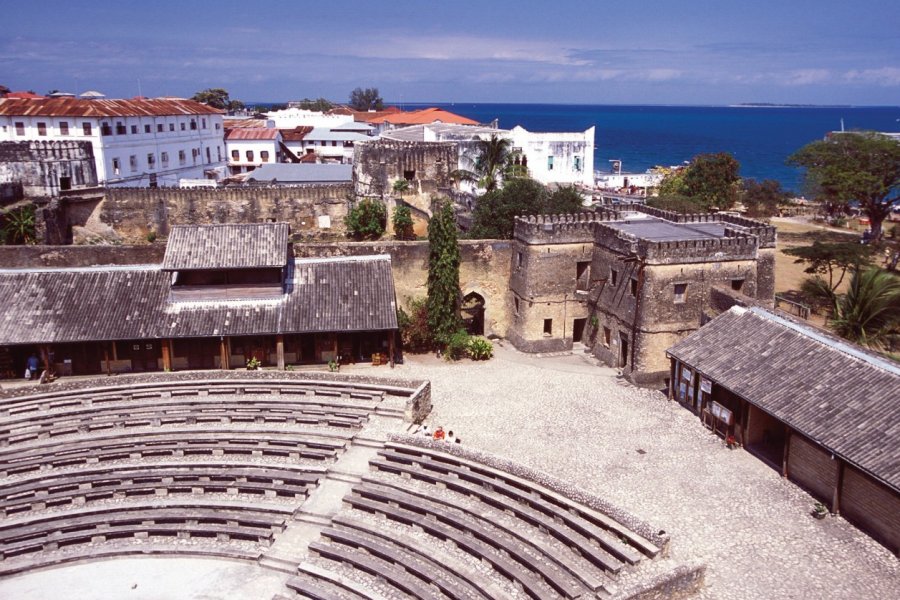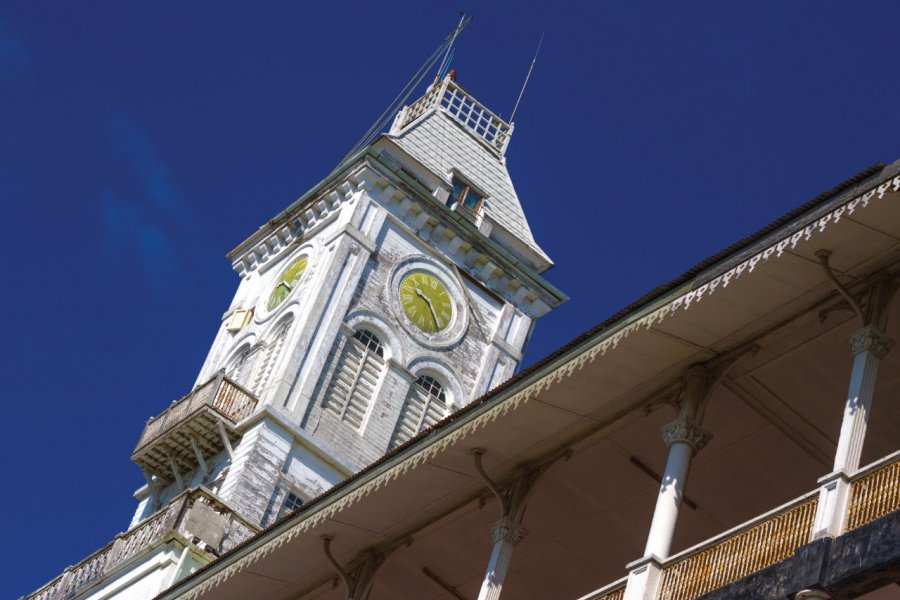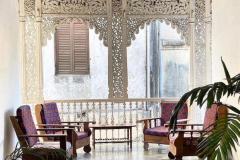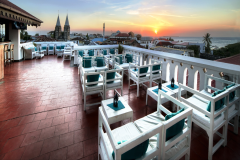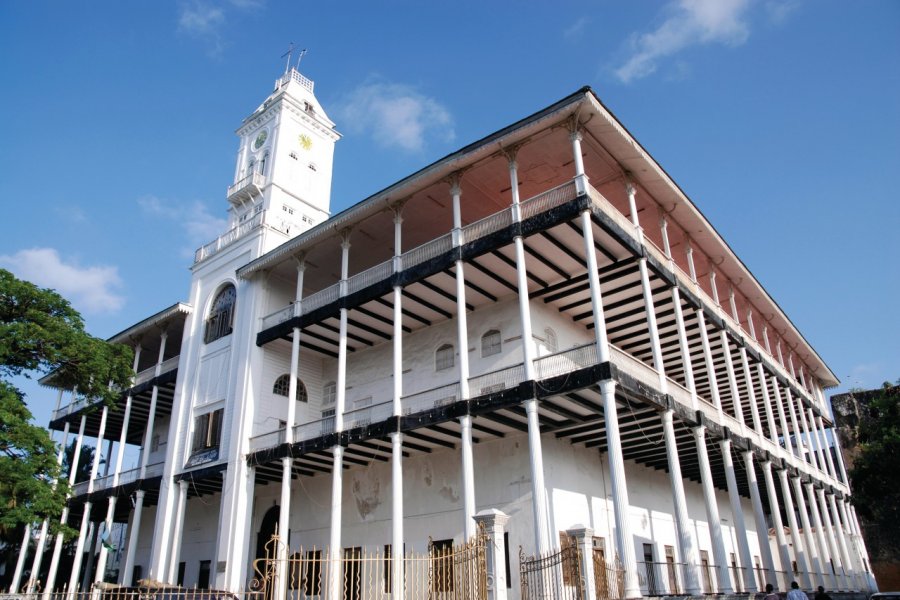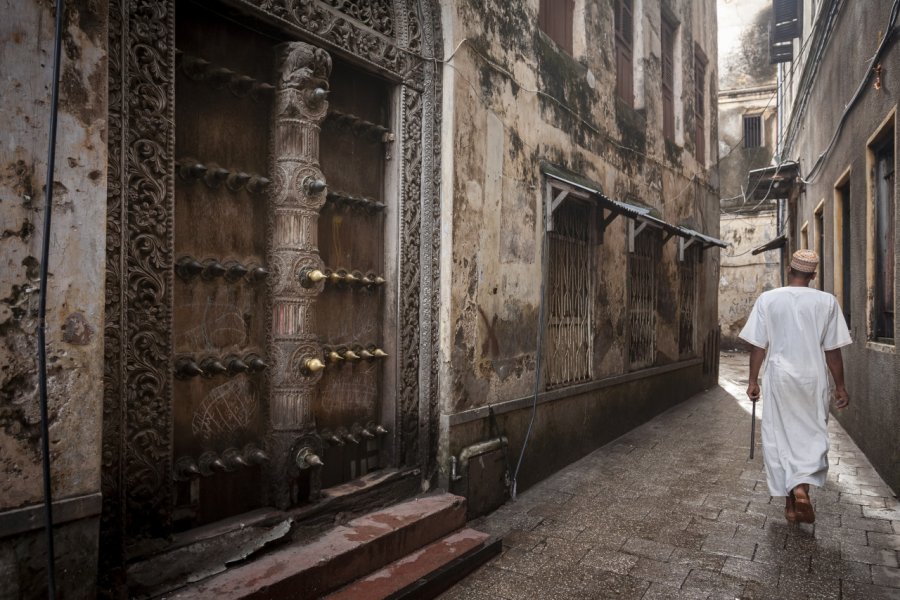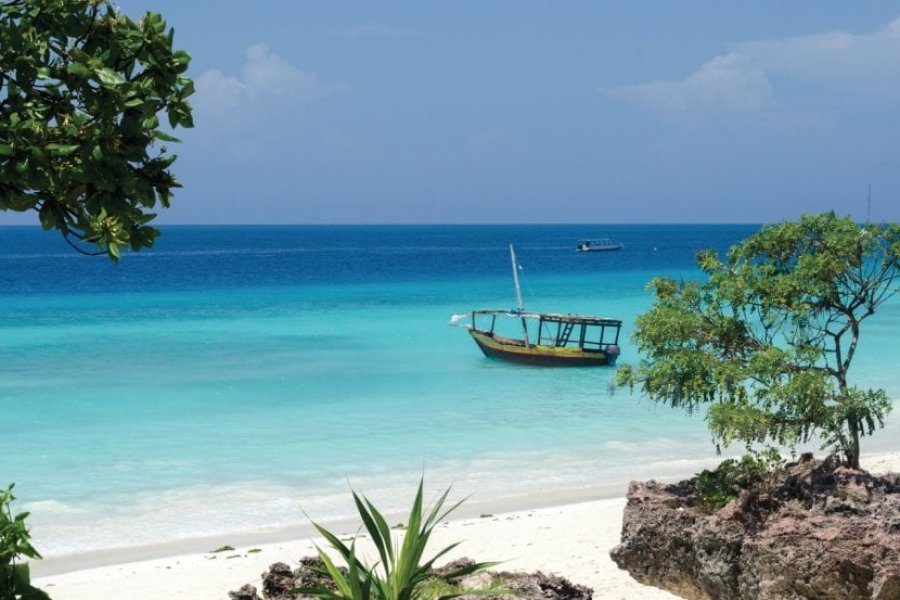Travel Guide Stone Town
Find an accommodation
Advertising
Zanzibar's old town - Stone Town - is so unique that it has been declared a World Heritage Site by UNESCO. It's known as Stone Town, as opposed to traditional African settlements built from perishable materials. The architecture of Stone Town bears unmistakable traces of its Arab and Indian past. As early as the 13th century, beautiful homes were being built in coral stone. It was in 1831 that the site of Shangani was chosen by the first sultan of Zanzibar, due to the depth of its waters. The town was built within fifteen years on the site of a fishing village. The part of the town to the east is called Ngambo, and is more "recent", although it began to be built around 1860.Since 1985, Unesco has been working on its restoration. But it has to be done quickly, because over time, the houses deteriorate, and the coral stone walls are vulnerable to the torrential rains of March, April and May. Stone Town is a city whose center is a veritable labyrinth of alleyways. You'll be dazzled by the beauty of a house, the detail of a carved door and the number of remarkable buildings around every corner. It's in this maze, on foot, with your nose in the air, that the charms of Stone Town are revealed. You'll be able to capture some of life's most colorful moments. Exceptional is the moment when the songs of the muezzins from all the town's mosques rise at the same time above the rooftops, when children run or ride bicycles around street corners, when women chat while shopping... Your sense of smell will be in overdrive in this spice garden: you can smell cinnamon, pepper and, above all, cloves. The latter was imported by the Sultan of Oman when he transferred the Sultanate's capital to Zanzibar in 1840. The importance of the island, which in his eyes resembled paradise, was obvious. By the end of the century, the island was the world's leading producer of cloves, building its wealth on spices.Here, time seems to have stood still, and the decrepit buildings have a charming, authentic patina. Most of the houses in the old town are between 100 and 200 years old. Apart from religious buildings, including over fifty mosques, most are small palaces with whitewashed walls, built high around a courtyard. Not a single car is to be found, given the narrowness of the area, but pedestrians and cyclists stand aside in front of man-drawn carts and scooters whizzing past. Many vendors will try to lure you back to their stores in the really touristy section of the center, but as you move away, they quickly become scarce. If you want to share in this capital city life, which in reality resembles a friendly village, all you have to do is wander around. The city is very safe during the day, right down to the less touristy alleyways, and the Zanzibarites' welcome is truly warm, even if some of the vendors are sticky. Since 2017, cameras have been installed at every alley corner to ensure the safety of locals and tourists alike, as it had deteriorated a little in recent years.The streets are narrow and winding, typical of many more oriental cities. The Arab influence is very noticeable, notably in the muezzin calls, the dress of the locals, the kanzu (gallabieh or djellaba) worn by the men, and the black or white bui-bui worn by the women (often as a wedding gift). Many women also wear colorful saris. But this labyrinth of lively alleyways, lined with shops, is obviously also steeped in African culture. The architecture reflects this synthesis to some extent, with stone benches along the walls for palavers; wood carvings with plant motifs on the double doors, which also reveal the status and prosperity of the owners; the interior organization around a courtyard, from which the further you move away, the darker and more intimate the room becomes; the staircase that spirals away from the center to the servants' quarters under the roof; the elaborate Indian- or Arab-style balconies (in the case of moucharabiehs, allowing you to see without being seen), and the colored glass brought in by Indian traders from Gujarat; the elaborate windows and louvers... Carved wooden doors with rounded spandrels are Indian, while the square ones are more likely to be found on houses inhabited by Arabs: the usual motifs are the date palm, symbol of abundance, all kinds of flowers such as the lotus, symbol of fertility, chains, symbols of protection, pineapples, vases, sometimes even more or less stylized fish and, from time to time, a Koranic inscription above the lintel. Today, however, some of the 2,000 houses are difficult to maintain, having been worn down by the region's rains despite the addition of sloping roofs, whereas the original Omani model was terraced. Street vendors in the old town sell hard-fried squid, fresh sugarcane juice and local art. You'll no doubt come across what are known as baraz, informal meeting places for the local version of palaver. You may also discover what udi is: a mixture of various ingredients such as sugar, water, perfume, flowers, spices and rosewater, which women burn to perfume their bodies and the rooms in their homes. In the past, the town was separated from the island by a natural canal, the course of which the Creek Road follows today, and which was filled in at the beginning of the 20th century.Sightseeing. The old town is well worth a visit for its many carved doorways, shaded and elaborately carved balconies, openwork loggias and verandas, and for its must-see museum: the slave market (the geoles) and the Anglican church, a visit that will leave a lasting impression, just like the slave house on the island of Gorée in Senegal. But beware! It's normal to get lost in the narrow streets of Stone Town at least once. If this doesn't appeal to you - although such an adventure is bound to lead to many discoveries - you can hire a guide, which we recommend, to help you learn more about the town. Don't forget that the population is predominantly Muslim and practicing. It is therefore essential to wear decent clothing, which means that women must at least have their stomachs and knees covered.
What to visit Stone Town?
Advertising
Suggested addresses Stone Town
x 28
The best restaurants
x 39
The best hotels
x 35
The best visits
x 42
Travel agencies
x 71
The best transportation
x 12
The best outings
x 5
Sport and leisure activities
x 3
The best treats
x 6
The best care
x 15
The best stores
x 8
The best home-deco
x 7
The best services
x 8
The best events
x 29
The good plans
Weather at the moment
Advertising
Organize your trip with our partners Stone Town
Transportation
Book your plane tickets
Car Rental
Boat rental
Accommodation & stays
Find a hotel
Holiday rental
Find your campsite
Tailor-made trip
Immersion travel
Services / On site
Activities & visits
Find a doctor
Stone Town travel inspiration
Find unique Stay Offers with our Partners
Pictures and images Stone Town
Featured articles Stone Town
Other destinations nearby Stone Town
5 km away
25 km away
